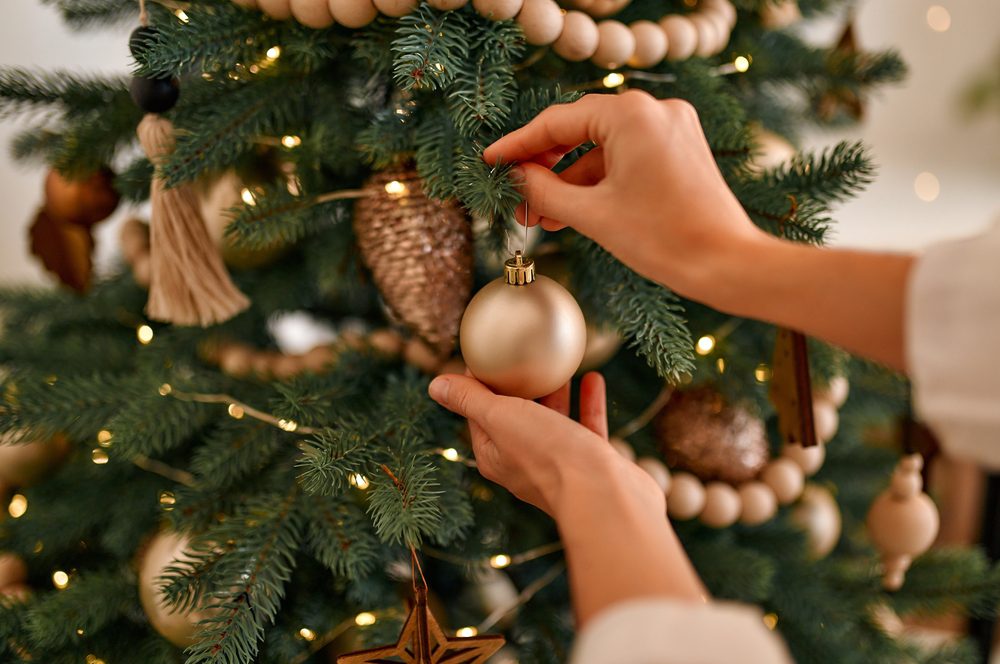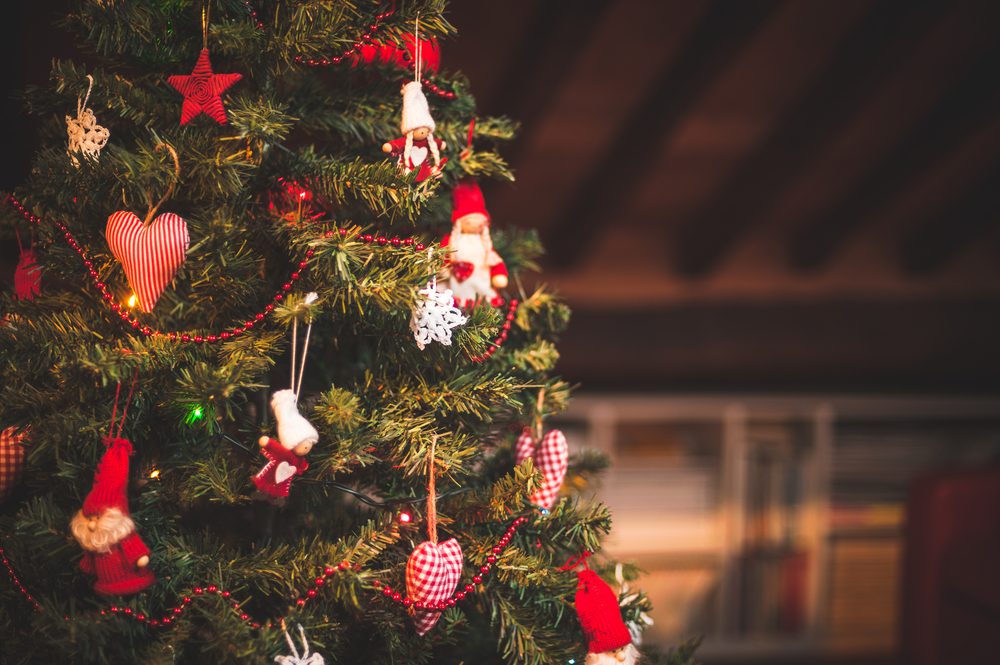How to Pick the Perfect Christmas Tree for Your Home: Step-By-Step Edition
For many families out there, the annual rite of selecting a Christmas tree can be a fun tradition, but this doesn’t mean that it’s taken lightly. Some folks even have a wide list of criteria that are very important to them.
Some people look for a tree that looks good, but the majority have a very specific kind of tree, depending on their aesthetics. They are looking for a tree that’s most appealing to them.
The most appealing one might be perfect for the holiday spirit, but not for the space it could decorate. So we can’t help but wonder what’s the right tree for our home. Here’s how to find out!

How much space do you actually have?
Before you decide to visit a tree farm or even a local Christmas tree lot, make sure you properly measure the room in which you plan to put your tree. It’s also very important to consider other things, like “proportion and scale.”
A Christmas tree should definitely complement the room’s dimensions without actually overwhelming it. First, start by measuring the height of the ceiling.
For ceiling heights, a great rule of thumb is to decide on a tree that’s a minimum of 1 foot shorter than the ceiling height. This will also bring more room for a tree topper and ensure the tree isn’t crammed into the space. For instance, with an 8-foot ceiling, a 7-foot tree is more than perfect.
If your tree stand is extra deep, you should also take that into consideration. Next, you have to focus your attention on the width of the space. When you’re considering the width, it’s very important to balance the tree’s presence with the room’s traffic flow.
For instance, a wide tree will definitely make a grand statement in any spacious room, but in a more compact area, a slim or even pencil tree is recommended.
However, if your space is limited and you need more time to squeeze a Christmas tree into a corner, you can simply choose a narrower tree. Also, make sure that outside the tree farm, the Christmas tree doesn’t look as big as it really is.
Having a tree baled in netting at the tree farm will definitely make it easier to transport. Still, it’s important to give it some thought, depending on how you will get the tree home.
For instance, can you truly fit a 12-foot tree on top of your beautiful MINI Cooper? Or will the tree you had in mind fit in the building’s elevator?
Lacking the necessary means of transportation or the physical condition to get an 8-foot live tree up, a couple of flights might help you decide faster on the right Christmas tree.
Which one is it going to be: live or artificial?
When you have to decide between live and artificial trees, it’s first a matter of personal preference, then of practicality. Live trees have a certain feel and a delightful scent, but they also require way more maintenance and can be less predictable in shape.
Moreover, there’s also the time-honored custom of picking the right one out and the pure authenticity of having a true Christmas tree in your home.
On the other hand, artificial trees might offer some convenience and uniformity, and they can also represent a one-time investment you can use for many years.
They come in all kinds of sizes and shapes, which makes them the perfect fit. Artificial trees are easier to set up, and they also include lights.
All you have to do is plug the tree in. An artificial tree could be the best option for families where allergies are an issue. When it comes to choosing which artificial tree you need to buy, make sure you consider all the details. The right needle tips will make the tree look more realistic.
Also, high-quality trees have hand-painted, molded tips and a brown stem. Others might have shredded tips and be completely green. Examine the density of the branches, as you don’t want to see the pole when the tree has been properly fluffed out.
Ultimately, you can get one that’s made mostly from polyethylene and has a design that resembles an actual tree species.
If you go for a live one, which species?
Once you have settled on the right height for the tree you need in your space, the other important question is which species best meets those requirements.
For instance, is the fragrance more important to you than the needle color? Will you be hanging heavy ornaments on the branches? Here’s what you need to consider before you hit the tree lot:
The Colorado Blue Spruce
The Colorado Blue Spruce is called like this for the bluish color of its needles. It is oftentimes sold as a living tree, which can be planted outside right after the holidays.
It also has a nice pyramid shape with strong branches that could easily hold heavy ornaments, even if its needles are sharp.
The Douglas fir
The Douglas fir is probably one of the most common Christmas tree types sold in the U.S., especially in the West. It comes with soft, shiny needles, and it grows symmetrically and particularly full.
However, if the branches have been sheared, they could easily become too full and way too difficult to decorate. For the sweet aroma alone, this evergreen is worth considering.
The balsam fir
The balsam fir comes with two-toned needles that are dark green on top and silver underneath. It also has a symmetrical shape and an evergreen smell, which makes it the ideal Christmas tree.
It’s also a fairly long-lasting one and a good bet for those who love putting their trees up in late November. The only downside of this tree is that its branches are flexible and don’t hold heavy ornaments very well.
The Fraser fir
This one is well-known for its intoxicating scent. It also holds its needles very well, even after cutting. The needles are a beautiful silvery-green color, around 1 inch long, and way softer than those of many other evergreens.
Its sturdy and beautiful branches are capable of holding heavier ornaments.
The Scots pine
This type of Christmas tree holds its needles long after the tree dries out. It has sharp needles, so you might want to watch out while you’re decorating.
If the tree has been sheared for shaping, then the branches might be very close together, which would make it difficult to decorate. Also, its branches are rather sturdy and suitable for ornaments of all kinds and sizes.

And what kind of tree stands?
There are some artificial trees that come with a stand, in which case you’re good to go. There’s nothing else you could possibly need. However, if you have to buy a Christmas tree stand for an artificial tree, you might want to look for one designed specifically for fake trees, which would usually have a thinner “trunk” than a real one.
A standard tree stand might not do the trick to hold an artificial tree. For real trees, you might also give some thought to the stand you use. Look for those stands that are rated specifically to hold the height of your tree. However, here’s our recommendation!
If you’re curious to read more, here’s what you could try next: 12 Innocent Refrigerator Lifespan Mistakes You’re Making Without Realizing It